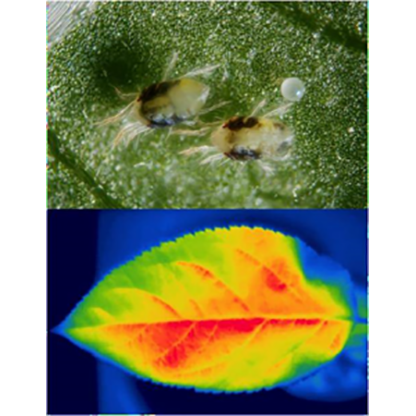Sylvain Pincebourde – Chargé de recherche CNRS, Université de Tours
le 10 mai 2016
Le rôle clé du microclimat dans la réponse des organismes au changement climatique
Résumé
Environmental heterogeneity drives the response of organisms to global changes and climate fluctuations. Habitats with the highest microclimatic diversity are more likely to continue to provide favorable microclimates despite regional warming. This heterogeneity is, however, not known for most microhabitats. We measured and modeled the heterogeneity of the apple leaf microclimate at several key spatial scales: the leaf surface, the canopy and the geographical gradient. A single leaf surface shows a high thermal variance when it is exposed to solar radiation. Temperature ranges of up to 10°C over single leaf surfaces were frequent. A biophysical model stressed out the key role of the leaf microtopography. This thermal variance at leaf scale was comparable to that measured at the scale of a single apple canopy. The heterogeneity at canopy scale is explained mainly by the various orientation angles of the leaves. Finally, we followed apple trees along a 750km temperate latitudinal gradient. The leaf temperature differences found between the two extremes of the gradient were of similar amplitude than the thermal variance at the within-leaf and within-canopy scales. Therefore, there is potentially as much thermal heterogeneity within a single leaf surface than along a biogeographical gradient. This result is crucial for leaf dwelling arthropods that thermoregulate: climate variations may be buffered by moving over few centimeters, like if they moved over hundreds kilometers. Biophysical models should be developed to quantify this heterogeneity at scales relevant to organisms, to be further included in global change ecology frameworks.


